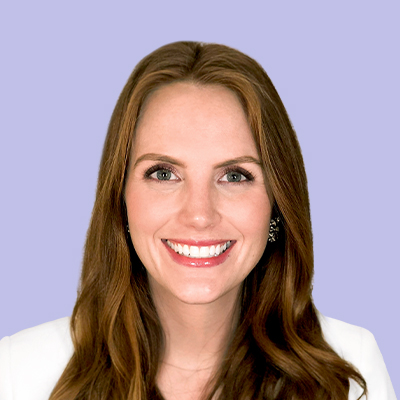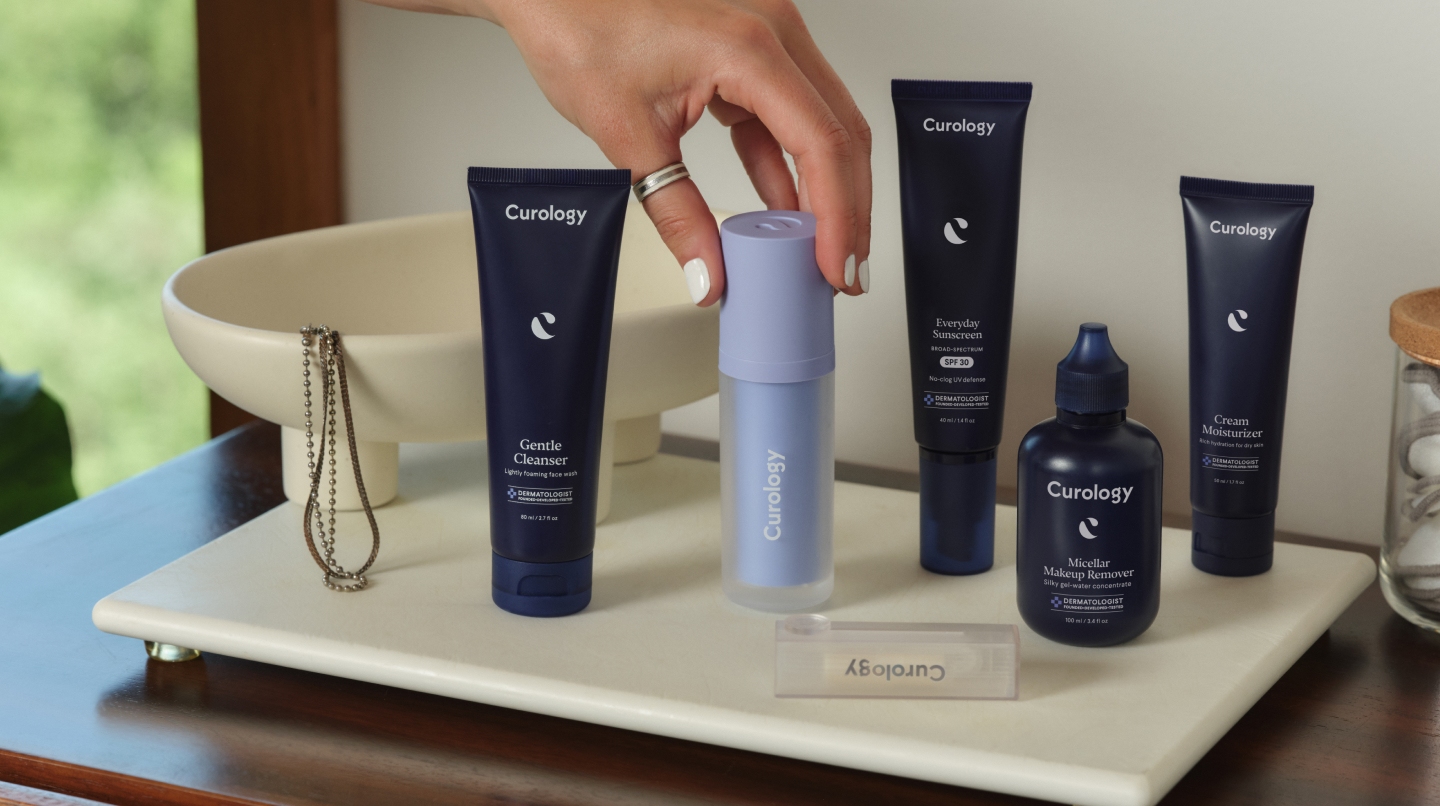How it works:
Share your skin goals and snap selfies
Your dermatology provider prescribes your formula
Apply nightly for happy, healthy skin
How it works:
How it works:
Share your skin goals and snap selfies
Your dermatology provider prescribes your formula
Apply nightly for happy, healthy skin
How it works:
Ingredient spotlight: Ketoconazole
This antifungal medicine can tackle a number of skin concerns.



Ah, acne. While it’s pretty easy to notice pimples when they pop up it can be pretty tricky to identify what’s causing them. The most common form of acne is acne vulgaris, which results from dead skin cells and excess oil, which clogs pores. C. acnes, a type of bacteria that normally lives on the skin, thrives in the excess oil and triggers an inflammatory response.
But bacteria isn’t always the cause of acne. Another microbial culprit may contribute to your breakouts:¹ Malassezia (also known as pityrosporum). Malassezia yeast is a type of fungus that regularly lives on the skin, and just like C. acnes, it thrives when your skin has excess oil. An overabundance of Malassezia can lead to a condition called pityrosporum folliculitis, aka “fungal acne.” Since those breakouts are largely caused by fungi, the usual acne treatments often aren’t enough. Enter: ketoconazole.
Here we’ll explain “fungal acne,” how it may be treated using ketoconazole, and the potential benefits and side effects of this medication.
What is “fungal acne?”
“Fungal acne” is technically a skin infection in hair follicles caused by an overgrowth of normal yeast (Malassezia). “Fungal acne” is a bit of a misnomer as it's not truly acne! Maybe that’s why dermatologists prefer to use its more technical name: Pityrosporum folliculitis. Folliculitis is an inflammation of the hair follicles on the face or body that is often caused by an infection.²
Folliculitis may appear as small, uniform, red bumps that pop up around your forehead, jaw, back, shoulders, and chest.³ “Fungal acne” often develops after exposing the skin to sweat and friction, pore-clogging ingredients, or a humid climate.⁴ It can be common among athletes who wear helmets, hats, or headbands.⁵
How do I know if I have “fungal acne?”
When it comes to figuring out whether you have “fungal acne” or true acne (acne vulgaris), there are a few key differences between the two.
Size. The bumps caused by “fungal acne” tend to be consistent in shape and size. Bacterial acne often forms in lesions (pimples) of varying sizes.⁶
Itchiness. “Fungal acne” tends to itch (and we mean really itch). In fact, nearly 80% of patients experience itching with pityrosporum folliculitis!⁷ Itching is a lot less common in bacterial acne.
Inflammation. You may experience inflammation with “fungal acne” which can be painful. Acne lesions, like cysts and nodules, can also be painful.
Dandruff. Malassezia is often associated with dandruff,⁸ though not everyone with “fungal acne” has dandruff.

How to treat “fungal acne” on the forehead
“Fungal acne” may not respond to traditional topical ingredients that treat the bacteria of true acne. You’ll need to attack the specific cause—the yeast—using topical antifungals.
Here are some tips:
Use anti-dandruff shampoo with zinc pyrithione or ketoconazole. Use products without pore-clogging (comedogenic) ingredients. Otherwise, you might get rid of “fungal acne” only to break out with true acne.
Use a zinc soap to wash your face. We recommend the Noble Formula 2% Pyrithione Zinc (ZnP) Argan Oil Bar.
Consider an oral antifungal. Resistant or significant folliculitis may require prescription-strength oral antifungals, such as ketoconazole. Though you should discuss the risk versus benefit with your medical provider.

What is ketoconazole, and what does it do?
Topical ketoconazole is an antifungal medicine⁹ used to treat conditions like athlete’s foot, ringworm, dandruff, and “fungal acne.” It’s available as a cream or shampoo and (depending on the condition) can be purchased either over the counter or by prescription. Oral ketoconazole is used for breakouts that are not responsive to other treatments and is available by prescription only.
Most patients typically see improvement in “fungal acne” within one to two months—provided they use topical ketoconazole consistently and as directed.

Potential benefits of ketoconazole for acne and skin
For the record, it’s completely normal to have fungi hanging out on your skin! But when there is an overgrowth, it can lead to skin irritation, inflammation, and various skin conditions. How to get rid of “fungal acne” starts with treating the fungal infection—you need to kill the fungus (Malassezia). And since ketoconazole is an antifungal medication,¹⁰ it’s an excellent option for keeping the fungus levels on your skin in check. Balancing your skin’s microbial ecosystem has many benefits, like treating “fungal acne,” dandruff, and athlete’s foot.
We still need more data to be sure, but early research suggests that topical ketoconazole cream can also help other types of acne. It’s been found to have anti-androgen activity.¹¹ Androgens are a group of hormones (the most well-known being testosterone) that play a role in the development of acne. Since androgens increase the production of sebum (oil), ketoconazole may help with oiliness, in theory.
Potential side effects of ketoconazole
Like all medicine, side effects of ketoconazole are possible—but not everyone will experience them. Common topical ketoconazole side effects may include itching, redness, or a stinging sensation where you’ve applied the product.¹² Oral ketoconazole use may cause nausea, vomiting, constipation, abdominal pain, dry mouth, flatulence, and tongue discoloration. Some people may experience more serious side effects that can be life-threatening, including anaphylaxis and severe liver injury.¹³
If you experience any concerning side effects, stop the use of the medication and seek treatment from an in-person medical provider as soon as possible.
Where can I get ketoconazole?
You can buy over-the-counter ketoconazole creams and shampoos by visiting your local pharmacy or supermarket. Depending on the skin concern, you may need a prescription, which can only be obtained from a licensed healthcare provider.
At Curology, we use clinically researched ingredients
Curology uses clinically researched ingredients, like zinc pyrithione, to treat “fungal acne.” We’re here to take the guesswork out of your skincare routine—licensed dermatology providers work with you to examine your skin, assess your skincare goals, and provide custom treatment options.
Interested in a custom treatment that helps get rid of “fungal acne?” We’ve got you. Curology’s prescription formulas suit your skin’s unique needs, and your personalized formula can evolve as your needs change. One of our licensed dermatology providers will help you along your skincare journey, plus your personalized formula is delivered right to your door.
FAQs
“Fungal acne” is technically a skin infection in hair follicles caused by an overgrowth of normal yeast (Malassezia). “Fungal acne” is a bit of a misnomer as it's not truly acne! Maybe that’s why dermatologists prefer to use its more technical name: Pityrosporum folliculitis. Folliculitis is an inflammation of the hair follicles on the face or body that is often caused by an infection.
When it comes to figuring out whether you have “fungal acne” or true acne (acne vulgaris), there are a few key differences between the two.
Size. The bumps caused by “fungal acne” tend to be consistent in shape and size. Bacterial acne often forms in lesions (pimples) of varying sizes.
Itchiness. “Fungal acne” tends to itch (and we mean really itch).
Inflammation. You may experience inflammation with “fungal acne” which can be painful.
Dandruff. Malassezia is often associated with dandruff, though not everyone with “fungal acne” has dandruff.
Topical ketoconazole is an antifungal medicine used to treat conditions like athlete’s foot, ringworm, dandruff, and “fungal acne.” It’s available as a cream or shampoo and (depending on the condition) can be purchased either over the counter or by prescription. Oral ketoconazole is used for breakouts that are not responsive to other treatments and is available by prescription only.
You can buy over-the-counter ketoconazole creams and shampoos by visiting your local pharmacy or supermarket. Depending on the skin concern, you may need a prescription, which can only be obtained from a licensed healthcare provider.
P.S. We did the homework so you don’t have to:
Anwar, A., & Kamran Ul Hassan, S. Two Percentage of Ketoconazole Cream for the Treatment of Adult Female Acne: A Placebo-Controlled Trial. Cureus. (2020).
Sun, K.L., Chang, J.M. Special types of folliculitis which should be differentiated from acne. Dermatoendocrinol. (2017 September 27).
Rubenstein, R. M., Malerich, S. A. Malassezia (pityrosporum) folliculitis. The Journal of Clinical and Aesthetic Dermatology. (2014).
American Academy of Dermatology Association. Acne-like breakouts could be folliculitis. Nd.
American Academy of Dermatology Association. Acne-like breakouts could be folliculitis. Nd.
Rubenstein, R. M., Malerich, S. A. Malassezia (pityrosporum) folliculitis. The Journal of Clinical and Aesthetic Dermatology. Ibid.
Cohen P.R., et al. Malassezia (Pityrosporum) Folliculitis Incognito: Malessezia-associated Folliculitis Masked by Topical Corticosteroid Therapy. Cureus. (2020 January 1).
Park, M., et. al. Genomic Multiplication and Drug Efflux Influence Ketoconazole Resistance in Malassezia restricta. Frontiers in Cellular and Infection Microbiology. (2020).
Medline Plus. Ketoconazole Topical. (n.d.).
Anwar, A., & Kamran Ul Hassan, S. Two Percentage of Ketoconazole Cream for the Treatment of Adult Female Acne: A Placebo-Controlled Trial. Cureus. Ibid.
Sinawe, H. and Casadesus, D. Ketoconazole. StatPearls. (2022 June 27).
Medline Plus. Ketoconazole Topical. Ibid.
Sinawe, H. and Casadesus, D. Ketoconazole. StatPearls. Ibid.
Laura Phelan is a board-certified Family Nurse Practitioner at Curology. She earned her Masters of Science in Nursing at Benedictine University and went on to get her post-master’s certificate as a Family Nurse Practitioner at the University of Cincinnati.
* Subject to consultation. Subscription is required. Results may vary.

Curology Team

Laura Phelan, NP-C
Related Articles
How to use acne body wash correctly: Your straightforward guideMen skin care: top concernsHow to get rid of body and back acne?Sunscreen for eyes: How to protect your delicate skin from UV raysFoundation makeup for aging skinPopular Articles
Ask Curology: Is my cold breaking me out?Slugging: The dermatologist-approved skincare hack going viral on TikTokTretinoin vs retinol: What’s the difference?How to create a self-care routine that actually sticksYour 2023 skincare horoscopeTry prescription skincare
Get routine essentials

Good skin days ahead
- Breakouts
- Redness
- Fine lines
- Dark spots
- Hair thinning